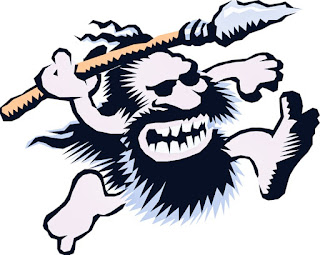The Cuban Has Landed
The Cuban has landed!
The Beginnings of the Cuban Colonization of Miami.
It was 1959. The first wave of Cuban immigrants to Miami headed North towards Miami. It was the wealthy elite, of course. But, as conditions in Cuba rapidly deteriorated, the exodus lost its lineage. A growing number of everyday Cubans sought refuge, turning what once was a journey only afforded by the privileged ones into one of necessity. Escaping became the goal by any mean available.
Once the rich and powerful were already here, Miami turned into a haven for those who were forced to ditch airlanes in favor of makeshift rafts, boats, and other non-first-class imaginative escape routes. The balseros were born. The rich plus these brave adventurers helped shape South Florida creating a lasting cultural and political impact.

The Original Cuban Influencers.
They didn’t have the internet, Facebook, or Reddit, but the affluent Cubans who fled the island soon after Castro took over in 1959 didn't need them. They were wealthy, stubborn, and headstrong. They couldn't vote but they forcefully renamed streets, reshaped neighborhoods, and made Spanish the dominant language. Politics, too, felt their influence. They turned Miami into a stronghold of anti-Castro sentiment, though their ultimate goal of overthrowing the communist regime remains unfulfilled.
These premature arrivals thrived culturally. They didn’t just import Cuban traditions —they reinvented them for a new context. Cuban music became a staple, filling Miami’s streets with strident salsa and soft bolero rhythms. Cuban eateries sprang up, offering locals a taste of pastelitos, croquetas, café con leche, pan con bistec, and the world famous Cuban sandwich. Little Havana and Hialeah turned into culinary and cultural epicenters, while Spanglish made English a rarity.
The steady influx of affluent exiles, bringing their resources and connections, eventually shifted into a tide dominated by working-class individuals, reflecting a transformation in the migration dynamic. For these later arrivals —once balseros braving the sea, now jungle crusaders crossing treacherous land routes— the journey to Miami was never guaranteed and has only grown more perilous today.
The Balseros: A New Chapter.
After the initial wave, the balseros —those who escaped on anything that floats — rose to stardom. They lacked wealth but carried unshakable determination. Their influence was equally profound, introducing Miami to a new level of vibrancy, passion, and, yes, volume.
The balseros didn’t redraw city maps like they aboriginal landers did, but they certainly redefined Miami’s soundscape and lexicon. Conversations became louder and more animated, peppered with phrases like que bolá (wassup) and action-movie-like gesticulation reminiscent of a cheap bar brawl, la griteria gained official status. Likewise, por la izquierda (under the table) defines anything clandestine. Over time, English crept into Cuban Spanish, producing delightful hybrids like oh, mai gad (oh, my God) and forgueret (forget it).
The Cuban Legacy.
Cubans transformed Miami into a vibrant, multicultural city. From their distinct food —think café con leche and pan con croqueta — to their salsa music and expressive communication, their contributions are undeniable.
Beyond the cuisine and language, Cubans also infused Miami with a resilience and entrepreneurial spirit that reshaped the city’s economy. Small businesses flourished, many becoming cornerstones of their communities. Their passionate engagement in local politics gave rise to influential Cuban-American leaders who continue to shape the city’s future.
While the original exiles focused on political activism against Castro, newer arrivals introduced Miami to the complexities of Cuban life under economic hardship. Their stories of perseverance added layers to the Cuban-American narrative, bridging gaps between generations of exiles.
Today, from the vibrant festivals of Calle Ocho to the local Cuban restaurants that have become cornerstones of Miami’s identity, the mark left by Cuban immigrants is unmistakable. From the vibrant festivals of Calle Ocho to the daily aroma of a colada wafting through the air, the mark left by Cuban immigrants is unmistakable. It’s a legacy of survival, creativity, and relentless hope.
From a Haven to a Home.
Over time, what began as a temporary refuge evolved into a permanent home. Miami became not just a place of exile but a city reborn, shaped by its Cuban inhabitants. The transformation wasn’t always seamless; tensions arose as the city grappled with its changing demographics. However, the result is a Miami that is uniquely diverse and dynamic, a city where cultures collide and coexist.
The Cuban story in Miami is one of adaptation and reinvention. It’s a reminder that even in the face of displacement, communities can thrive and leave a profound legacy. As the years go by, the history of Cubans in Miami continues to unfold, proving that their journey —much like Neil Armstrong’s— wasn’t just a landing but a giant leap.


Comments
Post a Comment